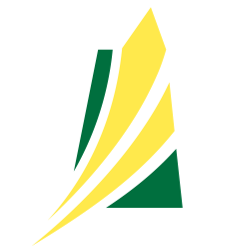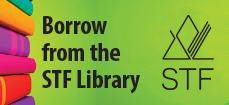Accounting 10, 20, 30
Course Configurations
ACCT31A
Module 31A: Asset Analysis (Optional)
Outcome
Analyze how financial statements are used when making business decisions related to bad debt.
Indicators
| (a) | Generate a list of who (e.g., insurance agencies, Canada Revenue Agency, financial institutions) needs access to financial statements and discuss the purpose of granting access. |
| (b) | Define bad debts and depreciation as used within financial statements. |
| (c) | Discuss how bad debts, depreciation, and inventory valuations assist in assuring that assets are represented as accurately as possible on financial statements. |
| (d) | Explore the inquiry questions: Who is interested in the accurate calculations of assets? Is it practical to aim for no bad debts in every situation? What impact does Canada Revenue Agency have on the amount of bad debt a company may claim? |
| (e) | Assess the impact of the GAAPs (e.g., historical cost, adequate disclosure, matching revenue with expenses, consistent reporting) on what is reported on financial statements. |
Loading...


R104104
Century 21 Accounting: Multicolumn Journal. Working Papers, Chapters 18-24(Eleventh edition)
This is a non-reproducible student resource that has end-of-lesson, end of-chapter and reinforcement activities, as well as chapter study guides that complement the corresponding textbook chapters. It includes worksheets for capitol growth and development, assets, depreciation, and intangible assets, inventory, accruals, deferrals and reversing entries, end-of-fiscal work for corporations, accounting for partnerships, and worksheets for recording international and internet sales.

R103903
Century 21 Accounting: General Journal(11th ed.)
This student resource is divided into 24 chapters that have the following subsections: 21st Century Skills, Critical Thinking Activities, Think Like an Accounting, Financial Literacy, Global Awareness, Ethics in Action, Forensic Accounting, Careers in Accounting and Accounting in the Real World. This resource promotes problem solving, discussion and creative thinking while building knowledge of accounting practices. One of the main differences between this and other common textbooks for accounting is that it introduces journalizing through the use of a general journal, not a combination journal. Special journals are still used in the textbook. Overall, the textbook would be appropriate for all three course levels.
(More information)

R002683
Accounting 101: From Calculating Revenues and Profits to Determining Assets and Liabilities, an Essential Guide to Accounting Basics
This book is organized into seven chapters that introduce topics and basic accounting terms using accessible language. This resource provides interesting facts and a history of accounting, and includes topics such as accounting scandals, fraud and big companies.

R037839
Century 21 Accounting Multicolumn Journal(10th ed.)
This textbook has the same content as the Century 21 Accounting Multicolumn Journal, Introductory Course, Chapters 1-17 (10th ed.) with two additional parts: Accounting for a Merchandizing Business Organized as a Corporation –Adjustments and Valuations; and Additional Accounting Procedures.
•
Century 21 Accounting Multicolumn Journal. Instructor's Resource CD
•
Century 21 Accounting Multicolumn Journal. Instructor's Resource Kit
•
Century 21 Accounting. Multicolumn Journal, Introductory Course, Chapters 1-17

R032771
Accounting Principles, Volume 1(8th Canadian ed.)
This Canadian edition is a comprehensive binder about accounting that offers basic terminology, ethical dilemmas, decision-making problems, exercises, comparisons, demonstrations, problems, challenge questions and real-life connection throughout the 10 chapters.

R033001
Financial Accounting: Tools for Business Decision-making(7th Canadian ed.)
This Canadian resource provides guided instruction on a variety of activities and projects related to business and accounting. Organized in 14 chapters, it offer unique real world connections, activities, projects, ethical dilemmas and decision making tasks.

R009355
Financial Accounting(Seventh Canadian Edition)
This resource consists of 10 chapters which contain a variety of information, assignments, activities, projects, ethical questions and business analyses that may be more suitable for accounting students. There are may project ideas located in the Stop + Think, Cooking the Books, and Spotlight on Businesses sections. There is an online component to this resource that offers tutorials, homework and assessment program.

R009352
Horngren's Accounting. Volume 1(10th Canadian ed.)
This Canadian resource is a soft-covered textbook that effectively address outcomes for the Accounting 10 and 20. The 11 chapters are divided into two parts. The first part addresses the basic structure of accounting, while the second part addresses accounting for assets and liabilities. MyAccountingLab is a portal available with learning tools such as mini-cases, videos and tutorials.

R009354
Horngren's Accounting. Volume 1, Flextext(10th Canadian ed.)
This Canadian resource is a comprehensive workbook that supplements the textbook providing activities with blank templates to match the starters, exercises, and problems from the corresponding chapters.



